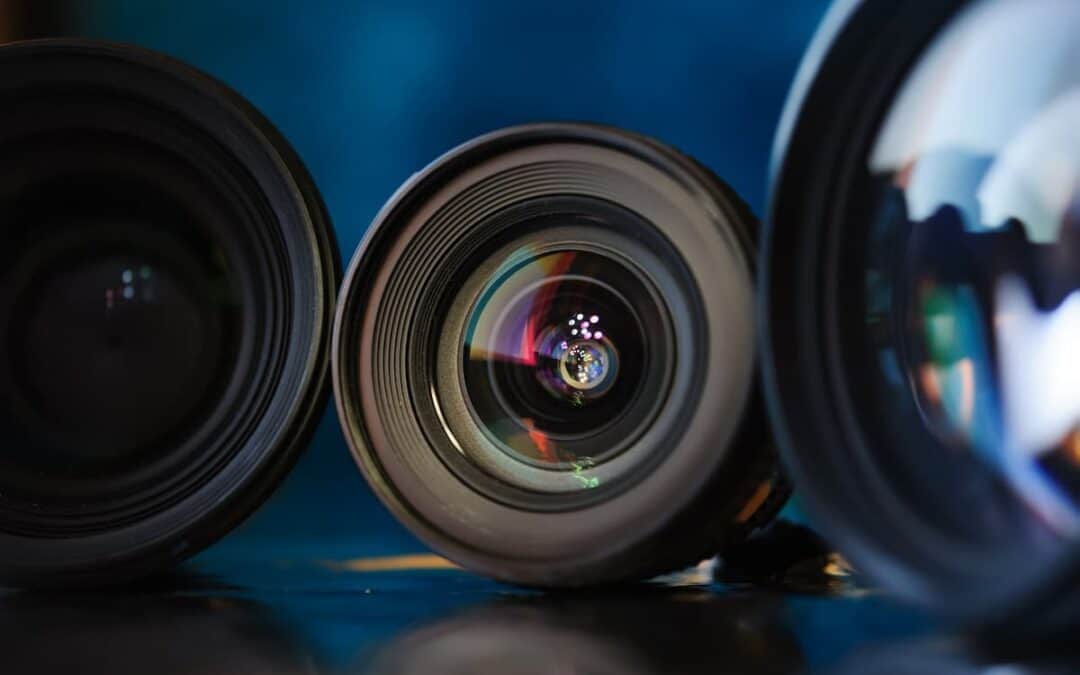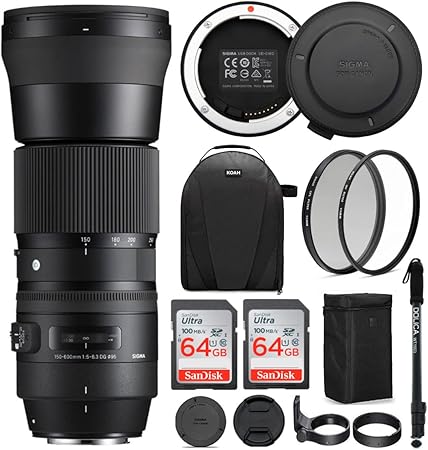The best f-stop for a specific telephoto lens depends on the camera sensor, focal length, light, and the subject you want to photograph in a given setting. Thus, you need to work with the f-stops to find the ideal aperture. So, there is no singularly best f-stop for every telephoto lens.
Here are the 4 best f-stops for most telephoto lenses:
- 1 to 2 f-stops higher than the lowest setting.
- Around 1 full f-stop short of the highest setting.
- Lowest f-stop for blurred background or low light.
- Highest f-stop for the best depth of field in the proper light.
So, let’s discuss some of the best f-stops for telephoto lenses and when to select each one. We’ll help you pick an f-stop to get the effect you are looking for and ensure that you get the most out of your lens.
Table of Contents
1. 1 to 2 F-Stops Higher Than the Lowest Setting
Telephoto lenses have a vast focal length ranging from under 100 mm (3.93 inches) to 600 mm (23.6 inches), but the range can be even broader than that sometimes. Also, there are short, medium, and super categories for both zoom and prime telephoto lenses.
Like cameras, telephoto lenses have different characteristics, such as:
- The types of lens elements.
- The number of aperture blades.
- The angles of view (zoom lenses).
- The maximum magnification ratio.
- The minimum focusing distance.
These specifications enable telephoto lenses to have distinct features even when using the same settings, such as a preferred f-stop. Hence, a specific f-stop won’t produce similar images for all lenses and cameras, and certainly not in different circumstances.
Likewise, you cannot use the same f-stop for varying focal lengths, whether for full-frame or cropped sensors, i.e., DX, CX, APS-C, or Micro Four Thirds. Therefore, after considering all the unavoidable variables, you need to find the most appropriate aperture for a given situation.
Generally, an appropriate setting is 1 to 2 f-stops from the maximum aperture. However, some telephoto lenses and cameras may need a setting other than a full f-stop. So, you have to try 1/2 or 1/3 stops as you reduce the aperture from the maximum. Here’s an example:
Nikon AF-S FX NIKKOR 200 – 500mm (7.9 – 19.7 Inches) Telephoto Lens
The Nikon AF-S FX NIKKOR 200-500mm Zoom Lens (available on Amazon.com) has a maximum aperture of f/5.6. This maximum aperture is the lowest f-stop. So, you have to increase the f-stop to find the best aperture for landscapes or portraits with a subject upfront.
Beginner photographers need a lens that can help them develop their skills, and this is a great option. The vibration reduction is excellent, especially for new photographers, and the affordable price point means that beginners can explore their interests without making too much of a financial investment.
Here are the full f-stops on this Nikon telephoto lens:
- f/5.6
- f/8
- f/11
- f/16
- f/22
- f/32
Suppose you want to use a large aperture due to low light. Or, you have to focus on a subject in the foreground, while the background can be relatively blurred. Thus, you have to try the f-stops from f/5.6 through f/11.
However, the ideal aperture may not be a full f-stop in a circumstance, i.e., f/5.6, f/8, or f/11. The most appropriate f-stop might be a 1/2 or 1/3 setting. Here’s how the 1/3 f-stop increment works:
- f/5.6 (full, 1/3), f/6.3 (2/3), and f/7.1 (3/3)
- f/8 (full, 1/3), f/9 (2/3), and f/10 (3/3)
Generally, the f/11 stop is the last level to try if you want a somewhat shallow depth of field so that you can focus on the foreground and still blur the background. Hence, the 1/2 or 1/3 f-stops after f/11, i.e., f/13 and f/14, are not in consideration for this scenario.
Relevant Circumstances for 1 to 2 F-Stops Smaller Than the Max Aperture
This approach works best when you use a telephoto lens to shoot subjects that are not too far from your camera. Also, you need a wide aperture for sufficient light to capture a sharp image of the subject. Furthermore, the background is not of much importance, so it can be a blur.
However, there is a caveat. Whenever you use wider apertures like f/5.6 or f/8 for a telephoto lens, the shallow depth of field will affect the background and the foreground. Thus, you will not have much detail in the photograph of the area that is closest to the camera.
You are probably thinking about why you have to toggle among the first two full f-stops to find a suitable aperture. The answer lies in the variable factors in a given setting, such as:
- The distance between your camera and the subject in focus.
- The ambient or artificial light condition throughout the setting.
- The depth of field you want for the foreground and background.
Note these inevitable factors while using a telephoto lens. Now, here is how the wider apertures or lower f-stops work:
- f/5.6, f/6.3, and f/7.1: maximum light exposure and weakest depth of field.
- f/8, f/9, and f/10: sufficient light exposure and shallow depth of field.
- f/11: moderate light exposure and medium clarity in the depth of field.
Therefore, you should go from f/5.6 through f/8 to f/11 if necessary as you find better natural or artificial light and you need a progressively better depth of field.
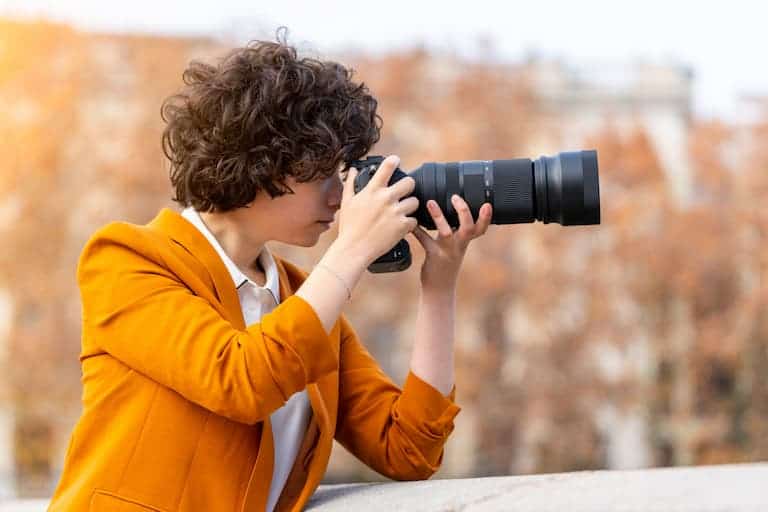
2. Around 1 Full F-Stop Short of the Highest Setting
Suppose the minimum aperture for your telephoto lens is f/32, like the Nikon Nikkor cited above. This minimum aperture is the highest full f-stop. So, you can expect the best depth of field at f/32, but this tiny aperture may not be appropriate in many cases.
For instance, a minimum aperture of f/32 can facilitate optical distortions, such as diffraction, spherical aberration, spherochromatism, etc. These distortions may adversely affect the edges and corners of your photography, cause blurring, and even magnify oddities in the frame.
Thus, the best f-stop for a sharp depth of field while ensuring adequate light is around one full f-stop larger than the minimum aperture. So, if the minimum aperture is f/32, the best f-stop for this telephoto lens is f/22.
However, you may have to tweak the full f-stop to its 1/2 or 1/3 setting for a perfect aperture in a given setting. This principle is the same as we have highlighted above regarding progressing from the lowest f-stop or maximum aperture.
So, you can try the following f-stops for f/22:
- 1/2 stops: f/22 and f/27
- 1/3 stops: f/22, f/25, and f/29
A telephoto lens with a massive focal length, like 500 mm (19.7 inches), requires an excellent depth of field for a landscape photo to have the desired clarity. Also, the image should not have low light exposure or distortions in the foreground, background, edges, and corners.
You can work around low light by tweaking the shutter speed and ISO. However, shutter speeds and ISO settings have limitations if you are shooting objects in motion. Thus, f/22 is a practical f-stop for landscapes and long-distance shots for various conditions, including light and motion.
That said, not all telephoto lenses have a minimum aperture of f/32. So, what is the ideal f-stop if you want to balance a sharp depth of field with nominal to no distortion?
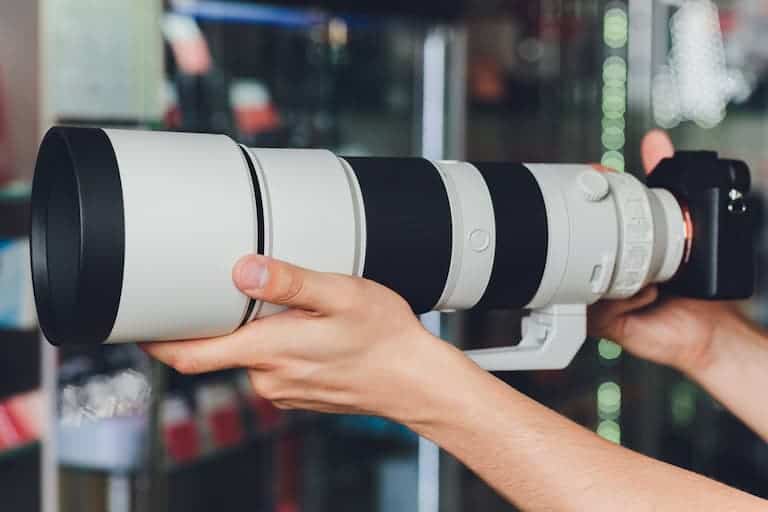
Sigma 150 – 600mm (5.9 – 23.6 Inches) DG OS HSM Telephoto Lens
The Sigma 150-600mm Contemporary DG OS HSM Lens (available on Amazon.com) has a minimum aperture of f/22. For these telephoto lenses, you can safely opt for f/16 or its 1/2 and 1/3 stops.
So, you have to choose one of the following:
- 1/2 stops: f/16 or f/19
- 1/3 stops: f/16, f/18, or f/20
However, you should consider the crop factor if you are not using a camera with a full-frame sensor. For instance, this Sigma telephoto lens is compatible with Canon DSLR cameras.
Canon has many cameras with a smaller sensor than the standard 35 mm (1.38 inches). Also, Canon’s crop factor is not the same as Nikon’s DX and CX or Micro Four Thirds used by the likes of Panasonic and Olympus. Here’s the difference:
- Nikon’s DX sensor has a 1.5 times impact for the selected focal length. Thus, a 200 mm (7.9 inches) lens captures an image that is the equivalent of a photograph shot by a 300 mm (11.8 inches) lens.
- Canon APS-C sensors’ crop factor is 1.6x of a lens’ focal length. So, your 200 mm (7.9 inches) lens captures an image that is the equivalent of a photograph shot by a 320 mm (12.6 inches) lens.
The crop factor affects the angle or field of view, not the depth of field. So, these sensors don’t affect the aperture or f-stop per se. You can use the same f-stop or aperture for full-frame and smaller sensors.
However, you may observe some differences in the depth of field subject to the distance from your camera to the subject and the landscape or view you are trying to shoot. Thus, the ideal f-stop for a specific camera and telephoto lens in a setting may not be the same for all sensors.
Relevant Circumstances for ~1 F-Stop Larger Than the Minimum Aperture
There are two pre-conditions to use around 1 f-stop larger than the max aperture:
- There is abundant light in the setting. The subject, foreground, and background are well-lit.
- The depth of field is of immense importance. Plus, you need a sweeping shot of a setting.
Any photo that requires a spectacular depth of field needs a higher f-stop or lower aperture. Thus, an f/16 for a telephoto lens with a maximum aperture of f/22 or an f/22 when the max is f/32 is likely to be the best f-stop for most cameras and sensors.
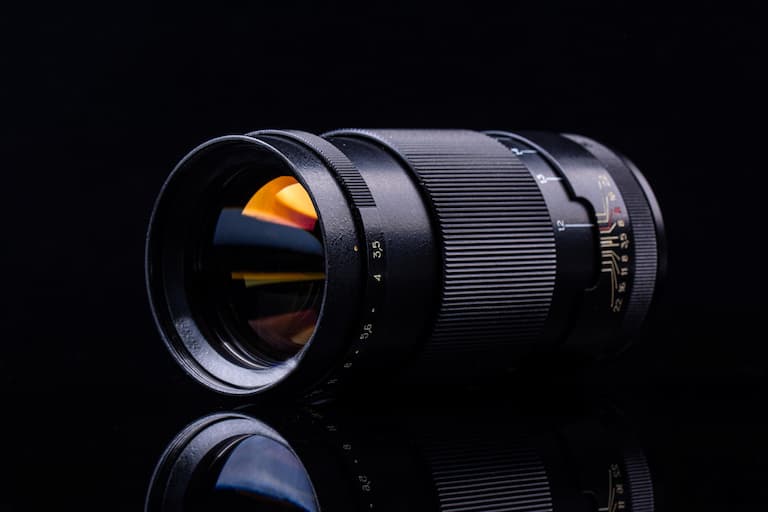
Also, it is not imperative for you to choose a full f-stop in such circumstances. Like you would do for wider apertures, you can experiment with the interim stops to find the ideal setting.
Furthermore, the fantastic depth of field at ~1 f-stop short of the minimum aperture impacts the background and foreground. So, you will have fewer distortions if you need to crop your photos at any corners and edges. You won’t have significantly blurred foregrounds or backgrounds.
3. Lowest F-Stop for Blurred Background or Low Light
The maximum aperture, which is the lowest f-stop, is ideal in low light conditions or when you need a blurred background in well-lit settings. This fundamental principle applies to all types of telephoto lenses, including:
- Short
- Medium
- Super
- Prime
- Zoom
Suppose you want to photograph a person, tree, bird, or animal with a mountain, forest, or some scenic horizon in the background that should be blurred. The lowest f-stop or maximum aperture setting is your best bet with a telephoto lens for such images.
However, you have to consider the focal length of the lens and the distance between the subject and your camera. A long focal length with the widest aperture or lowest f-stop may have a soft focus on parts of the subject. This issue is due to the shallow depth of field at max aperture.
4. Highest F-Stop for the Best Depth of Field in Proper Light
The highest f-stop or minimum aperture can offer a spectacular depth of field in proper light. Everything from the foreground to the subjects or objects within the frame and the background will have the starkest sharpness. On the flip side, you must worry about optical distortions.
Also, the minimum aperture or highest f-stop for a telephoto lens can highlight everything in the field of view rather sharply. So, if there’s dust or anything on your lens, the tiny spots might appear prominently in the photo. And you will effectively have an unsatisfactory image.
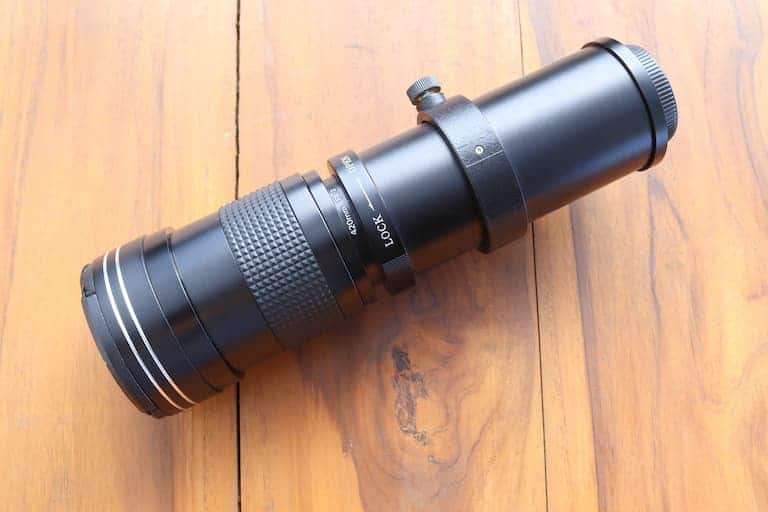
Every f-stop you choose is not independent of the focal length, shutter speed, or ISO. Also, the light in a given setting, the color and texture of everything in the field of view, and variables, like any subjects in motion, camera movement, etc., will affect the eventual quality of a photograph.
The best f-stops for a telephoto lens are f/8 through f/11 for low-light conditions and if you want to have blurred backgrounds in well-lit settings. For the sharpest depth of field, the best f-stops are f/16 or f/22, subject to the max aperture, without extraordinary optical distortions.
The maximum aperture or lowest f-stop may cause some diffraction and other optical issues, whether f/32 or f/64. So, you need to work on the aberrations later.

